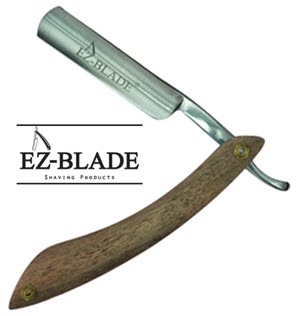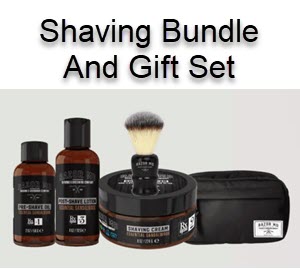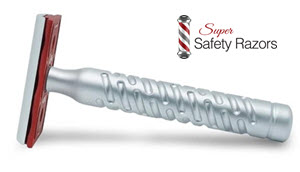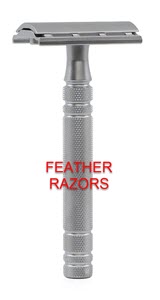Pros & Cons: Shaving Against the Grain Guide
Shaving Against the Grain: A Closer Look at a Controversial Technique
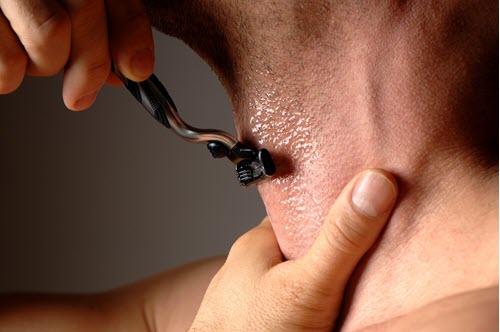
Shaving is a grooming routine for many, but achieving that perfect, smooth shave remains a pursuit filled with trial and error. One of the most debated techniques in the quest for the closest shave is shaving against the grain (ATG). This method involves moving the razor in the opposite direction of hair growth, contrary to the traditional advice of shaving with the grain (WTG). While shaving ATG can offer the allure of a closer shave, weighing its benefits against potential drawbacks is essential.
The Allure of Shaving Against the Grain
The primary appeal of shaving against the grain is the promise of an ultra-close shave. Cutting the hair as close to the skin as possible can leave the skin feeling exceptionally smooth. For those who prioritize a perfectly smooth face or tackle areas where hair grows in varying directions, shaving ATG can seem attractive.
Considerations and Techniques
Before embracing shaving against the grain, it’s crucial to understand its implications fully. The technique can increase the risk of common shaving woes, such as razor burn, skin irritation, and ingrown hairs, especially in individuals with sensitive skin or coarse, curly hair. However, careful technique and preparation can mitigate many of these risks.
- Preparation is Key: A successful ATG shave starts with proper skin preparation. Use warm water and a gentle cleanser to open pores and soften hairs. Applying a high-quality shaving cream can further reduce friction and protect the skin.
- The Right Tools: A sharp, clean razor is essential. Dull blades can tug at the hair and increase irritation. Consider the type of razor that best suits your skin and hair type, whether it be a traditional safety razor, a straight razor, or a modern multi-blade cartridge.
- Technique Matters: Start with a WTG pass to reduce hair length, then reapply shaving cream and carefully shave ATG. Use light pressure and short strokes, letting the razor do the work to minimize irritation.
- Aftercare: Rinse with cool water to close the pores, and apply a soothing aftershave balm to moisturize and calm the skin. If you experience irritation, break your skin between shaves to heal.
Personalization is Key
The decision to shave against the grain should be personalized based on individual skin type, hair texture, and personal preference. Some may find that incorporating ATG shaving into their routine offers the smoothness they desire without adverse effects, while others may prefer sticking to WTG or across-the-grain (XTG) techniques for comfort.
For those curious about shaving against the grain, consider starting slowly, with a small area, to see how your skin reacts. Remember, the goal of shaving is not just about achieving smooth skin but also maintaining skin health and comfort.
Final Thoughts
Shaving against the grain can offer the close shave many seek, but it requires careful consideration and technique to avoid irritation. By understanding the benefits and potential drawbacks, preparing the skin properly, and using the right tools and techniques, individuals can make informed decisions about incorporating this method into their grooming routine. Ultimately, the best shaving technique aligns with your preferences, skin type, and lifestyle, ensuring a comfortable and satisfying shave every time.
Harnessing Hair Growth Patterns for a Superior Shave
Understanding the nuances of hair growth patterns is a game-changer in shaving. It’s not just about dragging a razor across your skin; it’s an art that, when mastered, can significantly enhance the quality of your shave, minimize irritation, and prevent common shaving issues like ingrown hairs and razor burns. This simple guide explores the benefits of recognizing hair growth patterns and adjusting your shaving technique accordingly.
The Importance of Hair Growth Patterns
Hair does not grow uniformly. Instead, it sprouts in various directions across different parts of the face and body, influenced by genetics and hormonal factors. Recognizing these patterns is crucial for several reasons:
- Reduces Skin Irritation: Shaving with the grain (in the direction of hair growth) is gentler on the skin, lowering the risk of cuts, nicks, and irritation.
- Prevents Ingrown Hairs: Shaving against the grain increases the likelihood of hair tips growing back into the skin, leading to painful and unsightly ingrown hairs. Understanding growth patterns helps avoid this.
- Ensures a Closer Shave: While shaving against the grain can provide a closer shave, knowing when and where it’s safe to do so without causing skin issues is vital.
Identifying Your Hair Growth Patterns
The first step to a better shave is to map your hair growth patterns. This process is straightforward but requires attention to detail:
- Let Your Hair Grow: Allow your facial or body hair to grow for a few days. It makes it easier to observe the direction of growth.
- Use Your Fingers: Gently run your fingers across different areas. You’ll feel resistance when moving against the grain, which helps you map out the growth directions.
- Visual Inspection: Use a mirror to inspect the growth directions in well-lit conditions visually. Marking these directions with a washable marker or pen can be helpful if you’re starting.
Adjusting Your Shave Technique
With your hair growth patterns identified, you can adjust your shaving technique to improve your experience:
- Shave With the Grain: Always shave with the grain for the first pass. This approach is less irritating and provides a sufficiently close shave for most purposes.
- Across or Against the Grain: You can perform a second pass if you desire a closer shave. Shaving across the grain (XTG) is less irritating than against the grain (ATG) but still provides a closer shave. Only consider shaving ATG in areas where your skin is less prone to irritation, and you’ve experienced no issues with XTG passes.
- Use Light Pressure: Regardless of the direction, light pressure is crucial in avoiding skin irritation and cuts. Let the razor do the work.
Aftercare
Proper aftercare is essential to soothe the skin and prevent irritation:
- Rinse with cold water to close the pores.
- Apply a hydrating aftershave or moisturizer to soothe and protect the skin.
- Avoid alcohol-based products if your skin is sensitive, as they can cause further irritation.
Understanding and respecting your hair growth patterns can transform your shaving routine from a chore into a personalized grooming ritual. By shaving with the grain and adjusting your technique based on your unique patterns, you can achieve a comfortable, close shave while keeping your skin healthy and happy. Remember, the best shaving technique caters to your individual needs and preferences, ensuring a satisfying result every time.
Exploring the Benefits of Alternative Hair Removal Methods
For many, the quest for smooth, hair-free skin can be a journey of trial and error. Shaving, especially against the grain, is a standard method but has drawbacks, such as irritation, cuts, and ingrown hairs. Fortunately, the world of hair removal is vast, offering several alternative approaches that cater to different skin types, hair textures, and personal preferences. Let’s explore the benefits of some popular alternatives: waxing, laser hair removal, and electric shavers.
Waxing: Quick and Long-lasting
Waxing is a widely used method for removing hair from the root, providing a smooth finish that can last anywhere from three to six weeks, depending on individual hair growth rates. Here are some key benefits:
- Longer-lasting Results: Since hair is removed at the root, it takes longer to grow back, extending the time between hair removal sessions.
- Finer and Softer Regrowth: Hair that grows back after waxing is generally finer and softer, making it less noticeable and easier to manage.
- Exfoliation: Waxing also removes dead skin cells, leaving the skin smoother and more vibrant.
Laser Hair Removal: Precision and Permanence
Laser hair removal uses concentrated light to target and destroy hair follicles, significantly reducing hair growth. It’s an investment in both time and money, but the benefits are compelling:
- Permanent Reduction in Hair Growth: After completing a series of sessions, many experience a permanent reduction in hair growth, with some areas becoming nearly hair-free.
- Precision: Lasers can target specific areas, making them excellent options for facial hair, underarms, or the bikini area.
- Cost-Effective Over Time: While the upfront cost is higher, the long-term reduction in hair growth can make it more cost-effective than the cumulative expense of other hair removal methods.
Electric Shavers: Convenience and Comfort
Electric shavers offer a middle ground between the traditional razor shave and other hair removal methods. They’re designed for dry use, making them convenient and fast. Here’s why they might be a good choice:
- Less Skin Irritation: Electric shavers reduce the risk of cuts, nicks, and razor burns, making them suitable for sensitive skin.
- Convenience: They can be used anywhere, anytime, without water or shaving cream.
- Reusable and Eco-Friendly: Unlike disposable razors, electric shavers are long-lasting, reducing waste and saving money over time.
Choosing the Right Method
When deciding on an alternative hair removal method, consider the following:
- Skin Type: If you have sensitive skin, laser hair removal or electric shavers might be more suitable to avoid irritation.
- Hair Texture and Color: Laser hair removal works best on dark hair with fair skin, though advancements are making it more effective in a broader range of hair and skin types.
- Lifestyle and Budget: Waxing requires regular appointments, while laser hair removal needs a more significant upfront investment but offers long-term results. Electric shavers are a one-time purchase that provides flexibility and convenience.
Exploring alternative hair removal methods opens up new possibilities for achieving smooth, hair-free skin tailored to your needs and preferences. Whether looking for long-lasting results, precision, or convenience, an option can offer a comfortable and satisfying solution beyond the traditional shave. Remember, the best method is the one that aligns with your lifestyle, budget, and skin and hair type, ensuring a positive and practical hair removal experience.
Gentle Shaving: Techniques and Tips for Sensitive Skin
Shaving can be a daunting task for those with sensitive skin. The fear of irritation, redness, and razor burn looms large, turning what should be a simple grooming routine into a potentially uncomfortable experience. However, shaving can become a soothing ritual with the proper techniques and products, even for the most sensitive skin. This article explores specialized shaving techniques and tips to protect sensitive skin and prevent irritation.
Pre-Shave Preparation
The foundation of a gentle shave begins well before the razor touches your skin. Proper preparation is critical to minimizing irritation.
- Hydrate Your Skin: Shave after showering, as the warm water softens hair and opens pores, making it easier to shave with less irritation.
- Use a Gentle Cleanser: Clean your skin with a mild, fragrance-free cleanser to remove dirt and oil without stripping the skin’s natural barriers.
Choose the Right Shaving Products
Selecting suitable shaving products is crucial for sensitive skin, as the wrong ingredients can trigger irritation.
- Sensitive Skin Shaving Cream or Gel: Look for products labeled for sensitive skin, free from fragrances and irritants. These formulations provide a protective barrier between the razor and your skin, reducing friction.
- Quality Razor with a Sharp Blade: A sharp blade means less tugging on the hair and fewer passes needed, which can help prevent irritation. Consider using a razor with built-in moisturizing strips and fewer blades to reduce the risk of cuts and razor burns.
Shaving Technique
The way you shave can significantly impact your skin’s reaction. Here are some techniques to help protect sensitive skin:
- Shave With the Grain: Shaving toward hair growth is gentler on the skin. While it may not give as close of a shave as going against the grain, it significantly reduces the risk of irritation and ingrown hairs.
- Don’t Overstretch the Skin: While it might seem like pulling the skin taut will provide a closer shave, it can lead to cuts and irritation. Let the skin relax for a more gentle shave.
- Rinse the Blade Often: Rinsing the razor blade frequently with warm water removes accumulated hair and shaving cream, ensuring a smoother glide over the skin.
- Use Light, Gentle Strokes: Pressing too hard with the razor can aggravate sensitive skin. Light strokes allow the razor to cut without unnecessary pressure.
Post-Shave Care
Aftercare is as important as the shave itself, especially for sensitive skin.
- Rinse with Cool Water: This helps to close pores and soothe the skin. Pat your skin dry with a clean towel instead of rubbing.
- Apply a Soothing Aftershave: Choose an alcohol-free aftershave designed for sensitive skin. Products containing aloe vera, chamomile, or other soothing ingredients can help to calm the skin and reduce redness.
- Moisturize: Finish with a fragrance-free moisturizer to hydrate and repair the skin barrier, locking in moisture and protecting against environmental irritants.
Shaving with sensitive skin doesn’t have to be a painful or irritating experience. By incorporating these specialized techniques and carefully selecting products for sensitive skin, you can achieve a smooth, comfortable shave free from the dreaded post-shave irritation. Remember, the key to successful shaving with sensitive skin is gentle preparation, the right tools, careful technique, and nurturing aftercare.
Navigating the World of Razors: Types, Benefits, and Care
In the quest for the perfect shave, the choice of razor can make all the difference. Each type offers a unique shaving experience suited to different preferences and skill levels, from the classic straight razor to the modern cartridge razor. Understanding the benefits of each razor type and how to properly care for them properly can elevate your shaving routine to new heights. Let’s delve into the details of safety razors, straight razors, and cartridge razors, offering insights into their maintenance for optimal performance.
Safety Razors: Precision and Sustainability
Benefits:
- Close Shave: Safety razors are known for providing a close shave, reducing the risk of ingrown hairs.
- Cost-Effective: While the initial investment is higher than disposable razors, the cost of replacement blades is significantly lower.
- Eco-Friendly: Metal safety razors and recyclable blades offer a sustainable alternative to plastic disposables.
Care Tips:
- Regular Cleaning: Rinse your razor after each use and disassemble it weekly for a thorough cleaning to prevent buildup.
- Blade Replacement: Change the Blade every 4-7 shaves, or as needed, to maintain sharpness and to avoid irritation.
Straight Razors: Mastery and Tradition
Benefits:
- Ultimate Control: Straight razors offer unparalleled precision and control, allowing for a meticulous shave.
- Lifetime Use: With proper care, a straight razor can last a lifetime, making it a worthwhile investment.
- Reduced Waste: Beyond honing and stropping, straight razors require no disposable parts, contributing to less waste.
Care Tips:
- Regular Stropping: Before each use, hone the Blade on a leather strop to align the edge for a smoother shave.
- Honing: Have your razor professionally honed once or twice a year to maintain its sharpness.
- Dry After Use: Always dry your razor thoroughly to prevent rust and corrosion.
Cartridge Razors: Convenience and Accessibility
Benefits:
- Ease of Use: Cartridge razors are user-friendly, making them a good choice for beginners.
- Versatility: With multiple blades and flexible heads, they quickly adapt to the contours of the face or body.
- Readily Available: Replacement cartridges are widely available in stores and online.
Care Tips:
- Rinse Blades: After shaving, rinse the blades thoroughly to remove hair and shaving product residue.
- Store Properly: Keep your razor dry to prevent blade dullness and rust.
- Replace Cartridges: Change the cartridge at the first sign of dullness or discomfort, typically after 5-10 uses.
Choosing and maintaining the right razor properly are critical components of a superior shaving experience. Whether you prefer the precision of a safety razor, the tradition of a straight razor, or the convenience of a cartridge razor, understanding their unique benefits and care requirements will help you achieve the best possible shave. Investing time in your shaving tools enhances their performance and turns shaving into a more enjoyable and effective ritual.
Nurturing Your Skin: The Art of Post-Shave Care
The shaving ritual, whether part of your daily grooming routine or occasionally, doesn’t end when you rinse off the shaving cream. Post-shave care is critical in ensuring your skin remains healthy, hydrated, and irritated-free. This phase of your shaving routine can significantly impact your skin’s appearance and feel, making it crucial to understand the benefits of different post-shave practices and products. Here, we explore how to soothe and heal your skin after shaving, tailor your post-shave care to your skin type, and address common issues like razor burn and ingrown hairs.
The Importance of Post-Shave Care
Shaving can strip the skin of natural oils, potentially causing dryness and irritation and making it more susceptible to razor burn and ingrown hairs. Proper post-shave care helps to replenish moisture, soothe irritation, and protect the skin from bacteria.
Soothing and Moisturizing Aftershaves
Aftershave products are designed to calm irritation and moisturize the skin. Choosing the right aftershave depends on your skin type:
- For Sensitive Skin: Look for alcohol-free formulas with soothing ingredients like aloe vera, witch hazel, or tea tree oil. These ingredients help to calm the skin without causing further irritation.
- For Dry Skin: Hydrating aftershaves that contain glycerin or essential oils can help to replenish moisture and restore the skin’s natural barrier.
- For Oily Skin: Lightweight, water-based aftershaves or those with astringent properties can help to balance oil production without clogging pores.
Natural Remedies for Razor Burn and Ingrown Hairs
In addition to commercial aftershave products, natural remedies can be effective in treating razor burn and preventing ingrown hairs:
- Aloe Vera: Known for its soothing properties, aloe vera can calm razor burn and hydrate the skin. Apply pure aloe vera gel to the affected area for immediate relief.
- Cold Compress: Applying a cold compress to irritated skin can reduce redness and swelling.
- Tea Tree Oil: With its antiseptic properties, tea tree oil can help to prevent ingrown hairs by keeping the area clean and bacteria-free. Dilute with a carrier oil before applying it to the skin.
- Exfoliation: Gently exfoliating the skin 2-3 times a week can remove dead skin cells and prevent hairs from becoming ingrown. Use a soft brush or a mild scrub suitable for your skin type.
Tips for Treating Ingrown Hairs
Ingrown hairs can be both painful and unsightly. Here are some tips for treating and preventing them:
- Do Not Tweeze: While tempting, tweezing ingrown hairs can lead to infection and scarring. Instead, apply warm compresses to help the hair naturally emerge from the skin.
- Use Retinoids: A retinoid cream can help clear dead skin cells and reduce inflammation, making it easier for the ingrown hair to grow.
- Seek Professional Help: If ingrown hair becomes problematic, consult a dermatologist for advice or treatment options.
Conclusion
Effective post-shave care is essential for maintaining healthy, irritation-free skin. By selecting the right aftershave products, utilizing natural remedies, and adopting practices to prevent and treat razor burns and ingrown hairs, you can ensure your skin remains smooth, hydrated, and comfortable after every shave. Remember, the key to a successful shaving routine lies not just in the act of shaving itself but in how you care for your skin afterward.
- Bakblade 2.0: The Best Back Shaver for Men
- Ball Shaver That Won’t Cut You
- Shaving Gel: What to Know About!
- Henson Shaving: Where Design Meets Durability and Performance
- Caramel Honey Blonde Hair: Elevate Your Look
- Feather Razors: Precision Shaving for Every Skin Type
- Straight Razor Shaving: Unlocking a Closer, Smoother Shave
- Premium Safety Razors: Your Guide to Quality Shave
- Pros & Cons: Shaving Against the Grain Guide
- Maximize Your Shave: Norelco Sensotouch 3d Razor
